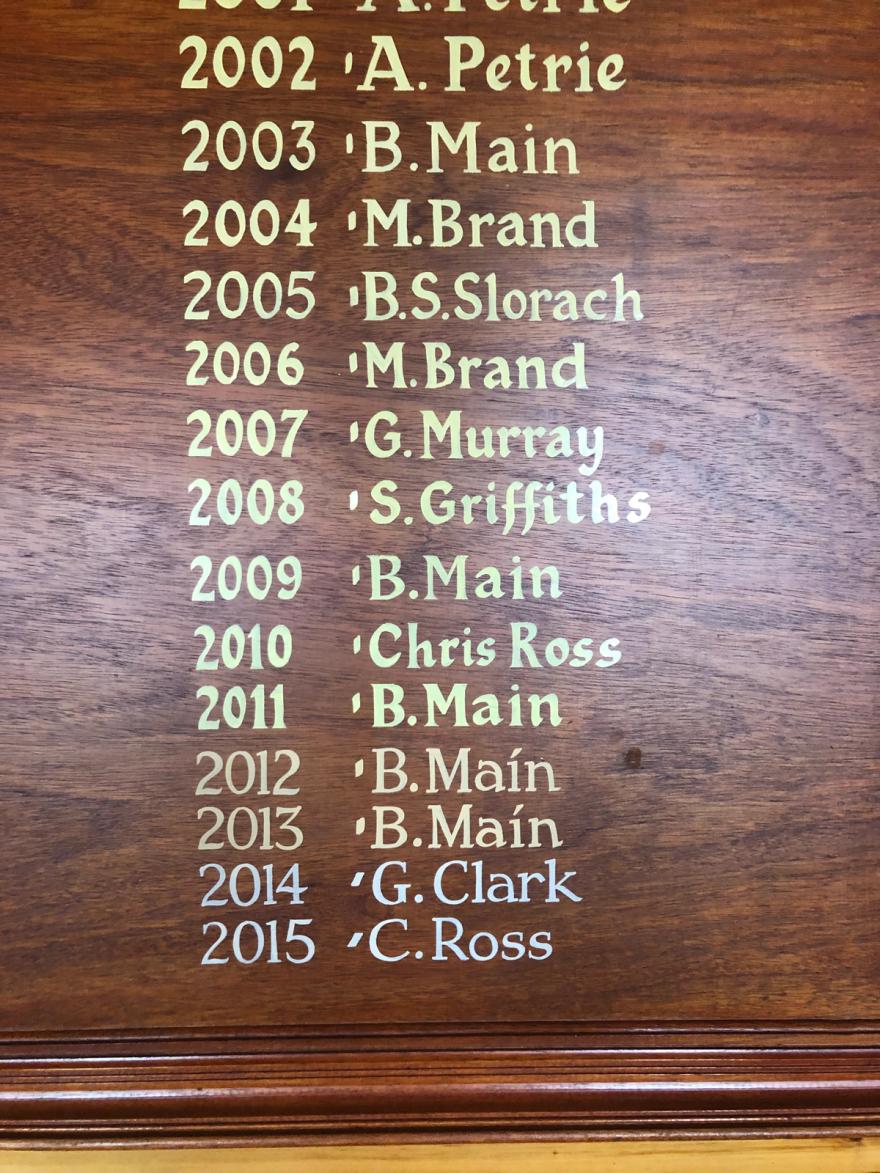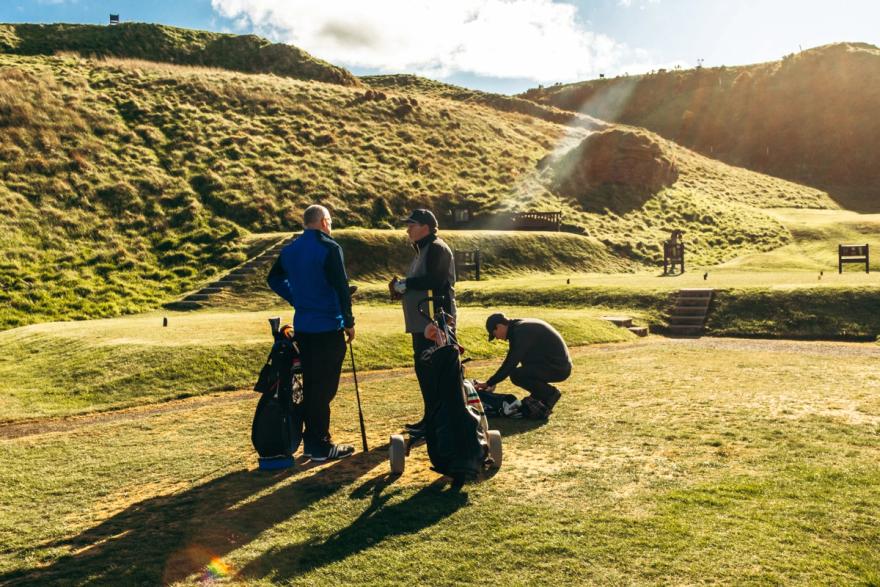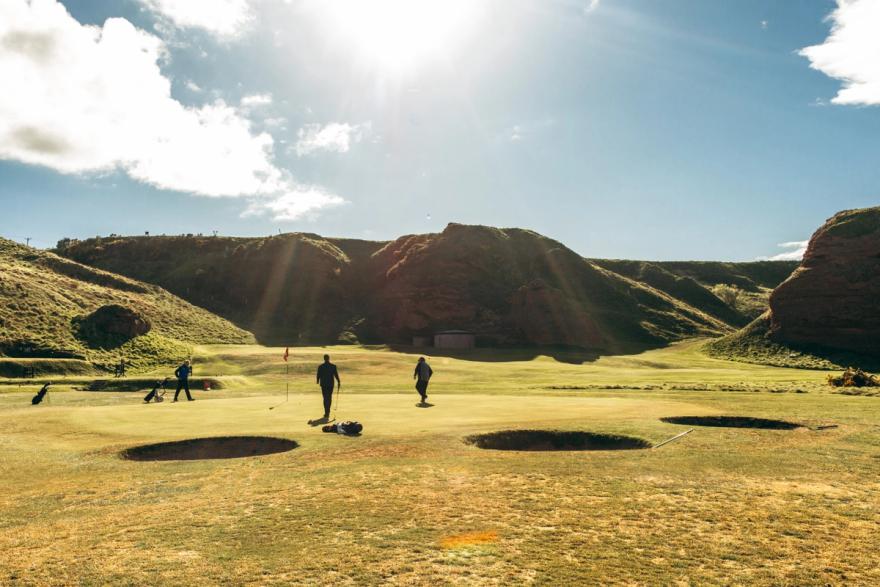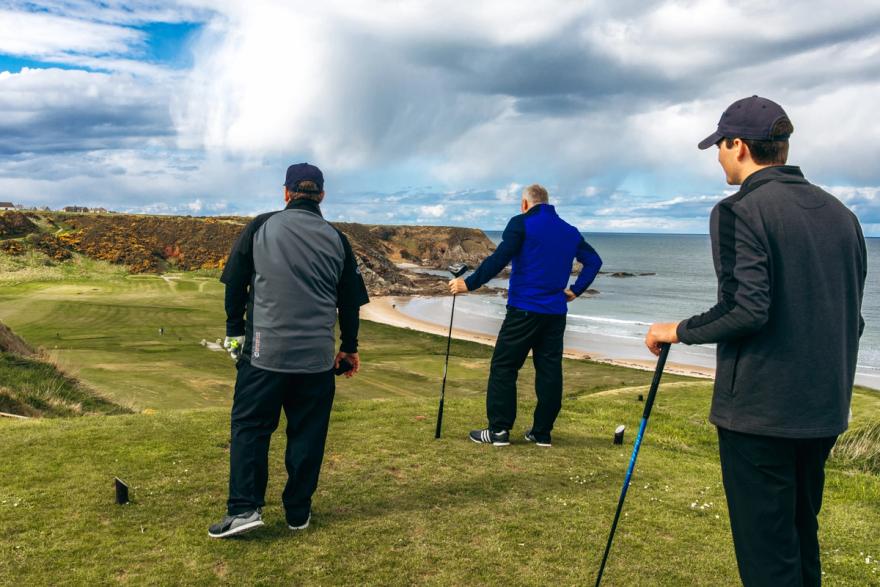Cover Photo provided by Mr. Jim Hartsell
Editor's note: When it came time to roll out our (long overdue) new website we wanted to do something celebrating the people we've met through golf and the places that are still out there for us to explore. We've only scratched the surface on who we need to meet and where we need to go. Jim Hartsell embodies that spirit to the fullest. I met Jim through Sweetens Cove a few years ago and we became fast friends. He's spent the last two-and-a-half decades exploring Scotland and digging deeper than nearly any American I know, non-Tom Coyne division. As an Registered Building Architect, he brings a unique perspective to golf travel, both on and off the course. We're thrilled to roll this series out over the next few months and hope you enjoy. - Tron
The Hidden Soul of the Game
Cullen Links, A Gentleman's Game with Mr. George Clark
By Jim Hartsell
Authors note: Please purchase a copy of The Links Diary Issue #1 (www.thelinksdiary.com) for my previous story on Cullen Links, also featuring George Clark, TC & Big Randy
It was on a stunning afternoon on the Moray coast. The lunch rush was winding down in the Cullen clubhouse (green fees are paid at the bar) as we entered the tidy and comfortable dining area/bar. George Clark was holding court with his wife Anne and several friends, as two hungry Americans entered. We introduced ourselves and George invited us to join the table, “Have you had your lunch?” he asked. When we responded that we had not, George immediately sprang to work, going straight to the bar manager, who came over to take our order. “We are almost out of soup, but I think we can manage,” she said kindly. In less than10 minutes, we had our soup and ham and cheese toastie - along with a pint of Tennent’s. Is there anything better than lunch in a Scottish clubhouse?

Cullen Links. Photo provided by Mr. Jim Hartsell
In Ian Nalder’s excellent 2000 book, “Scotland’s Golf In The Day’s Of Steam,” he details how the convoluted Scottish railway system impacted the development and popularity of golf, especially along the east and west coasts. Courses such as Cruden Bay, Turnberry, Machrihanish and Brora owe much of their early success and development to the Great Northern Railway, the Great North of Scotland Railway, the Highland Railway and others. Cullen was founded with 9 holes in 1870 (or 1879 depending on varying accounts) a few years before the railway line reached the area. In 1892, the club invited the great Old Tom Morris to revise the links, which he did in characteristically brilliant fashion. Realizing that the economy of the town could be greatly enhanced by tourism, the club expanded to 18 holes (around 1904) and started to promote itself as easily accessible by train from Glasgow and London.
There is a massive and elaborate 1884 railway viaduct that signals the entrance to the magical links of Cullen and this lovely seaside fishing village. A local Earl who lived at the nearby Cullen House, insisted that his family and guests travel only by The Highland Railway, in which he had a financial interest. He refused to use the local Cullen station, which apparently led to the construction of this viaduct. Whatever the reasons for its’ existence, the viaduct offers a stunning entry gate to one of the great places in Scotland.
In my story on Cullen which appears in The Links Diary #1, a journal started in 2020 by the brilliant young Scots Jamie Darling, Kenny Pallas, Stuart Currie and Graeme McCubbin, I describe many of the holes designed by Old Tom on this ancient golfing ground. There is a legend that the local vicar severely chastised three young men for playing golf on the links on the Sabbath in 1641. I can understand why these boys risked the wrath of God. There is a feeling a Cullen that is hard to describe. There is a sense of rightness and history – that this is true, unadorned Scottish golf, perhaps even the way it was played 120 or 360 years ago.
We had been introduced to George by Big Randy of No Laying Up a few weeks prior to our trip. He graciously agreed to drive up from his home in Aberdeen to meet us at his beloved club, where he and his wife Anne are former club champions – Anne an astonishing 19 times. George grew up in Cullen and is the course’s greatest ambassador. He is currently the president of the Northeast District of Scottish Golf. They assist the Scottish Golf Union, the sport’s governing body, with competitions in the area and the implementation of the new World Handicap System. In all my golf travels over the years, I have never met a nicer gentleman and greater advocate for Scottish golf.

Club Champions at Cullen Links. Photo provided by Mr. Jim Hartsell
In the best Scottish tradition, George Clark does not tarry during a round of golf. He flies around Cullen, dispatching shots quickly and efficiently. However, I do not want it to seem that we were rushed – quite the opposite. There were several points in the round where we stopped to discuss the history of the game or for George to point out some important landmark in the distance. The Scots allow sufficient time for enjoyment and conversation during a round - yet strive to finish with a haste that is unmatched anywhere in the world. It is a joyous way to play the game and one that is rarely found in the USA. A slow round of golf drains your body’s energy. You almost always feel refreshed after the constant movement of a game of golf in Scotland – unless caught in a sudden hurricane on the 11th hole somewhere.
George is a knowledgeable student of golf history. As our threesome progressed quickly around Cullen, we discussed the relative merits and weaknesses of the various Open Championship venues – and certain players we both admired. We paused on the 9th tee, my favorite hole at Cullen, and had a discussion that I made note of in my journal later that night. Out of the blue, George asked me who I thought was the greatest player of all time.

George discussing the history of the game. Photo provided by Mr. Jim Hartsell
Without hesitation, I responded, “Nicklaus.” “Why do you reckon Jack and not Tiger?” he replied. “Well, he had 16 top 5 finishes in your Open Championship alone. He could have won it 12 times,” I said. “Aye. He was always there or thereabouts. By the way, I agree with you. I just wanted to see what you’d say,” he said with a smile.
Much of the greatest excitement at Cullen occurs around the 3 giant red stone obelisks, known as “sea stacks,” in play on several holes. I must make a special mention of the 13th hole in particular, a one-off in my experience. It is a 127-yard par 3 that plays completely blind over the tallest of the red monoliths, to a small perfectly sited green cut into the base of the cliff. If Old Tom is responsible for this one hole alone, that is enough for me. It is a hole that will make you laugh out loud and appreciate the sheer brilliance of Scottish golf.

11th Green at Cullen Links. Photo provided by Mr. Jim Hartsell

12th Green at Cullen Links. Photo provided by Mr. Jim Hartsell

16th Green at Cullen Links. Photo provided by Mr. Jim Hartsell
George talked a lot about how much he had enjoyed playing with the No Laying Up boys. He mentioned (with a laugh) that he sometimes gets recognized in Aberdeen from his appearance on the NLU Tourist Sauce episode on Cullen. We paused to have our picture taken by an NLU sponsorship sign on the 15th tee, while he praised Tron and Phil (he never once said Big Randy) for all the exposure they had brought to the course. Visitor play was up 15% over the previous year, he told us proudly.

15th Tee Marker at Cullen Links. Photo provided by Mr. Jim Hartsell
I did not measure the time of our round, but I believe we played in 2 hours and 40 minutes. As we said our good-byes to our new friend in the small car park, we mentioned that we planned to play the relatively unknown Covesea Links – 40 minutes up the road - before dark. Knowing that we had already played 18 holes at Fraserburgh that morning, George eyed me a bit skeptically. “Are you sure that’s wise?” he said with concern, mixed with humor.
My response was on slightly defensive. “Well, we are in Scotland and have enough daylight to drive there and play 9 more holes.”

Waiting on the fairway to clear. Photo provided by Mr. Jim Hartsell
“Aye, I understand,” replied Mr. George Clark.
Recommendations
Cullen Skink is a thick fish soup that is served throughout Scotland, but especially in the Moray area. It originated in Cullen and was once seen as simply a good way to use leftover smoked haddock. A food that was once seen as a simple and modest form of traditional cooking is now a revered national dish. I love it. Jake and I had it several times as a starter on our trip.
That night, after we did manage to play 9 holes at Covesea, we had a particularly good bowl of Cullen Skink in Lossiemouth. I asked our friendly waitress if she could tell me the recipe. “Ah, it’s not much at all really. A bit of onion, potatoes, milk and haddock.” I vowed to attempt to make it myself and have come up with an American version that is passable. Smoked haddock is not widely available in my area of the US, so I have improvised.
Cullen Skink Recipe
Ingredients
- 4 cups of whole milk
- 2 bay leaves
- 2 tbsp butter
- 1 large onion
- 4 large Yukon gold potatoes, peeled, diced, cooked and mashed
- 3 - 4 cod filets
- 1 teaspoon of liquid smoke
- Chives or parsley, finely chopped
- Salt and pepper
Instructions
- Melt the butter in a medium to large saucepan. Add the chopped onion and cook on medium heat until clear. Add the milk, liquid smoke and some of the parsley or chives and bring to a simmer for about 3 minutes. Add the cod filets and simmer until cooked, about 5 minutes. Remove the fish with a slotted spoon and place on a plate to the side.
- Add the mashed potatoes, salt, pepper and simmer for 15 minutes.
- Flake the fish into small pieces and stir into the soup. Check to see if you need any more salt or pepper. Top with extra chives or parsley.
This should be served with sourdough bread. At least that is how I do it. I will probably be banned from Scotland for using cod instead of smoked haddock. Cheers!